Fascinated by the mysterious placenta

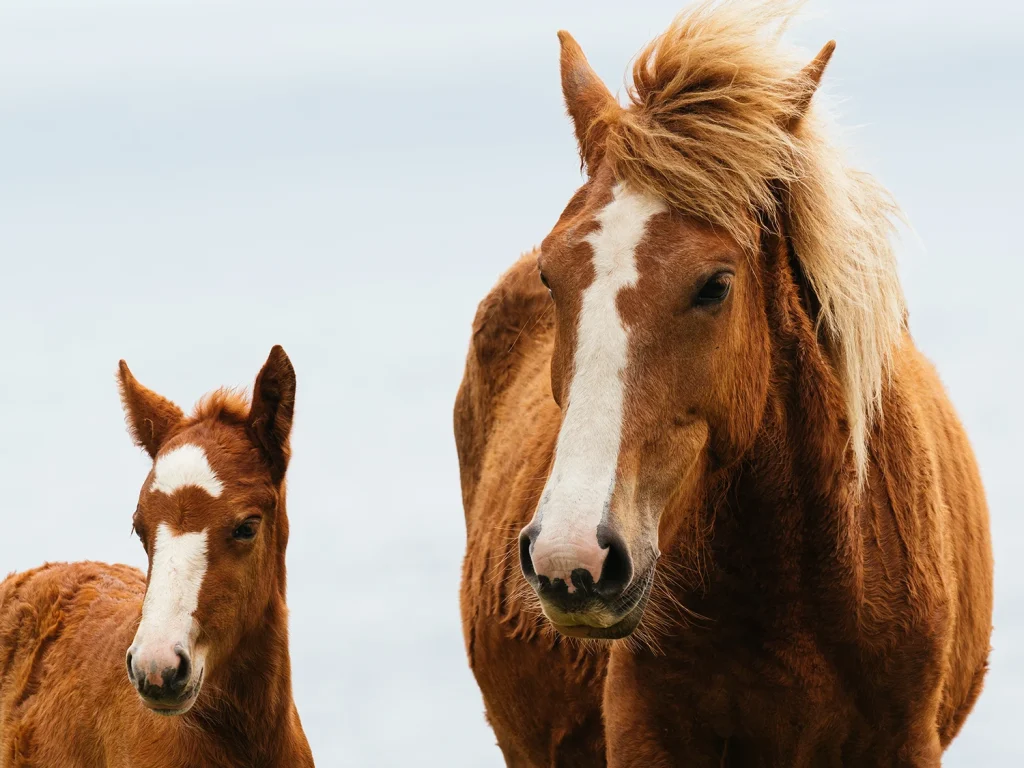
Placenta refers to the placenta, but generally speaking, the word “placenta” does not refer to the “placenta” itself, but rather to the “placenta extract” of various components extracted from the placenta.
The placenta is a disk-shaped temporary organ that connects the uterus and the amniotic sac that envelops the fetus growing in the female’s abdomen.It is formed during pregnancy and is expelled from the body along with the baby during childbirth.
The reason why a tiny fertilized egg can grow into a baby during a short gestation period is through the placenta, which contains all the nutrients necessary for fetal development and an abundance of physiologically active substances (substances that activate the functions of cells in the body). It can be said that the organ contains the fundamental energy of life.
CHARITES LAB, we are fascinated by this mysterious “placenta” and are conducting thorough research and development of “placenta” that is useful for beauty and health. We manufacture our products consistently at our own factory using the same manufacturing technology.
Placenta effect
A treasure trove of high-quality amino acids
The human body is composed of 60% water, 20% protein, 10% fat, and minerals. Protein accounts for 16-20% of body weight. It accounts for approximately 50% of the ingredients excluding water, making it an important component. The main component of the body is protein, which is constantly synthesized and broken down to maintain the body. However, as we age, protein breakdown increases and protein synthesis decreases, leading to insufficient reconstruction of skin tissues and accelerating changes due to aging. Amino acids are the smallest units that make up the body, so ingesting amino acids activates protein synthesis and rebuilds the skin at the cellular level. Other than human placenta, horse-derived placenta extract is the safest and most nutritious way to ingest high-quality amino acids. Our research laboratory used a new drink product and had women in their 30s to 50s sample it over a two-month period, and verified the results.
Pharmacological effects of placenta
Active oxygen removal, skin beautification effect
– Removes active oxygen that causes skin aging (spots, wrinkles, freckles) and skin problems caused by ultraviolet rays. Improvement of acne, atopic dermatitis, and dry skin.
Promote blood circulation, improve stiffness, etc.
– Distributes blood to every corner of the body, activating cells and improving stiff shoulders and sensitivity to cold.
breast enhancement
– The ability to promote blood circulation and activate cells acts on the mammary glands, promoting the development of the mammary glands, leading to increased bust size.
Lower back pain improvement
– Makes the tissue around the intervertebral disc flexible and relieves pain. It also has the effect of repairing aging and damaged tissue.
Alleviation of menstrual pain and menopausal symptoms
– Improves hormonal imbalance and relieves menstrual pain. Increases estrogen secretion and alleviates various symptoms that occur during menopause.
Osteoporosis prevention
– It stimulates the secretion of estrogen, suppresses bone loss, and stores calcium and collagen components necessary for bone formation.
Placenta Drink Clinical Trials/Overview
Implementation Period
– From December 2013 to February 2014
Product
– A placenta drink containing 16,000 mg of food-grade placenta extract (standard 04) in a 30 mL bottle, consumed once a day before bedtime.
– The study divided 14 women aged between 30 and 50 into two groups: 9 who consumed the drink and 5 who did not, for testing purposes..
At the same time, we conducted a sensory diagnosis in which participants answered a questionnaire each time regarding their physical condition, hair condition, and skin condition, ranging from the best to the worst. When the results were tabulated, the group who drank the drink improved to the best state every time, while the group who did not drink had many responses that remained almost the same.For example, the answers regarding the condition of the hair after 8 weeks were converted into a numerical value. As a result, the group that drank had an average of 2.5, while the group that did not drink had an average of minus 1, suggesting that there is a large effect on areas other than the areas measured.


Four weeks after drinking Placenta Drink, there was a significant difference between the two, with cheek elasticity improving in the drinking group. When taking the average values, the elasticity of the drinking group increased from 0.63 to 0.72, while the non-drinking group showed only a slight increase of 0.60 to 0.62. The results showed that the group that ingested placenta for eight weeks significantly maintained the elasticity of their cheeks.
Moisture
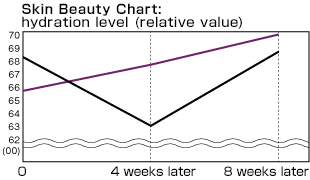

Regarding the amount of water in their skin, the group that drank placenta steadily increased their water content and their skin became moisturized, whereas the group that did not drink placenta saw a significant drop, especially after the fourth week. The fact that one group is doing so well while the other group is doing so well confirms the effectiveness of placenta.
Furthermore, skin age decreased steadily in the group that took placenta, starting at 48 years old and finishing at around 42 years old. This can be considered a major accomplishment as it means that I have become around 6 years younger after only 8 weeks of challenge.
Oil content

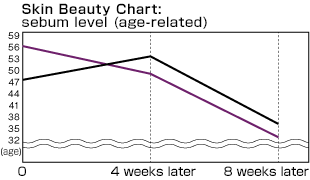
When measuring the oil content of the skin, results were almost the same as those for water. Oil becomes deficient, especially during the cold, dry winter months. Oil also plays an important role as the first barrier, preventing viruses and bacteria from attaching to the skin.
What is noteworthy about this oil content measurement is the rapid change in skin age in the group that ingested placenta. The average age was initially over 56 years old, but by the midpoint of the fourth week, it had already dropped to the lowest level of 48 years old, and by the end, it was a dramatic change to 32 years old. The difference is 24 years, and I feel that I have received confirmation that rejuvenation by ingesting placenta is a certainty.
Number of pores
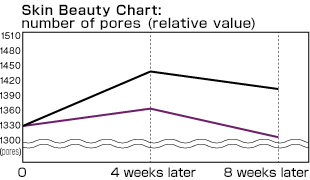
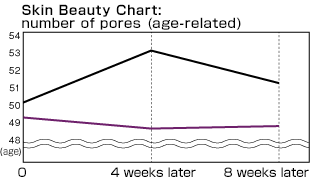
One of the most mysterious data in this clinical test was the number of pores. Looking at the graph, we see that 4 weeks after ingesting placenta, the number of pores in the ingestion group increases, which is an inexplicable movement, but in the 8th week, the number of pores decreases at a rapid pace. The difference from the peak time is more than 50 items.
Of particular interest is the graph of age change. While the group that did not take placenta experienced a drastic increase in age, in contrast, the age of the group that took placenta decreased steadily. This is very likely to decrease if you continue using the placenta after this, so it is very helpful.
Pigmentation number


Skin pigmentation is a major skin care issue. It is difficult to see the difference in skin care from day to day, but if you look at it over a period of one month or one year, you may find that people who have been properly taking care of their skin feel rejuvenated.
In this examination, we continued to closely observe the number of pigmentations and the area of pigmentation.
We confirmed that the number of pigmentations increased after 4 weeks in the placenta intake group, but this is because the placenta improves the pigmentation of the entire skin, causing the hidden pigmentation to become more noticeable. This is the result. This decrease will be resolved by continuing to drink placenta, and the entire skin will turn white. The evidence for this is the data from week 8. In addition, the person’s age has become nearly 5 years younger than at the peak, highlighting the strong effect of the placenta.
Pigmentation area
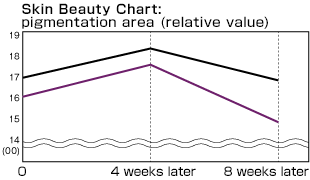
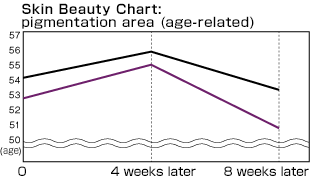
Data regarding the area of pigmentation was smoother than that regarding the number of pigmentations. Again, a reversal of pigmentation due to pigment changes was observed, but this was slight and at the end of the 8th week, a reduction of more than 10% was recorded. 10% in 8 weeks is quite a good result, and if you continue taking placenta at this rate, you will see a difference in your entire face that will look brighter in a year or two.
Also, skin age has decreased by about 3 to 5 years. This can also be said to be a solid result.
Number of wrinkles

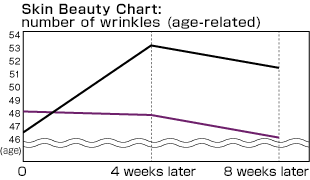
Along with age spots and acne, wrinkles are always at the top of the list when it comes to skin problems. Just like age spots, wrinkles are originally caused by skin deterioration due to exposure to ultraviolet rays.
There are many types of wrinkles, from deep wrinkles on the forehead to crow’s feet wrinkles.
When you ingest placenta, the first change that appears is crow’s feet, or fine wrinkles. If you continue to drink placenta after that, the wrinkles on your forehead, the wrinkles under your eyes, and the lines that everyone hates will gradually fade. This is because the skin turnover returns to normal due to the ingredients in the placenta.
The tests showed a very clear difference between the group that took placenta and the group that did not.
Types of placenta
CHARITES LAB’s placenta
CHARITES LAB manufactures placenta raw materials extracted from horse placentas using CHARITES LAB’s unique manufacturing method. We believe that the key to placenta lies in its “protein content,” and we are able to specify this value and supply placenta raw materials according to your requests.
Features of horse-derived placenta



We use placenta from pastured horses for meat. Grazing horses for meat are raised in a vast land blessed with nature and feed on native grasses as their staple food, so the placenta collected from these horses has a slight odor and a faint natural aroma. Another feature is that the placenta itself is large, high in protein, and high in amino acids.
Placenta extract (for liquid base)
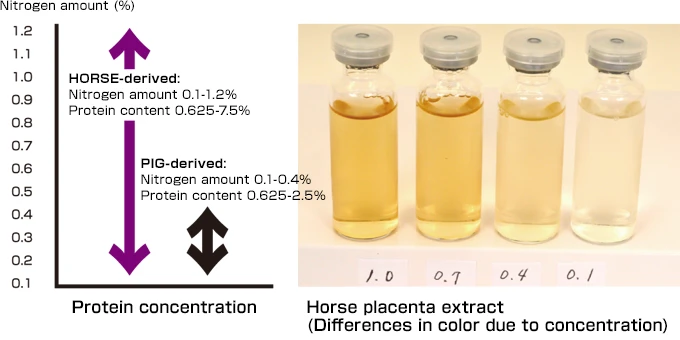

CHARITES LAB, we can supply products with a nitrogen content of approximately 0.1 to 1.2% (protein content: approximately 0.625 to 7.5%) based on placenta raw materials (undiluted solution base). This means that you can choose based on the concentration of protein, which is the core of the placenta.
To make it a little easier to understand, we measure the nitrogen content of the manufactured placenta stock solution using our own protein analyzer. By multiplying it by a conversion factor of 6.25, you can calculate the protein content of the placenta. Specifically, a nitrogen content of 0.1% means a protein content of 0.625%, and a nitrogen content of 1.0% means a protein content of 6.25%.
*The conversion factor of 6.25 means that the amount of nitrogen in protein is generally around 16%, so multiply the amount of nitrogen by the conversion factor of 6.25 as 100÷16=6.25.
Horse: nitrogen content: approximately 0.1 to 1.2% (protein content: approximately 0.625 to 7.5%)
Placenta FD powder (freeze-dried)
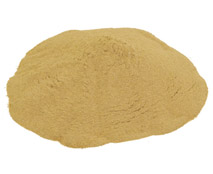
After concentrating the placenta raw material for powder, it is completely sterilized and freeze-dried. Approximately 100% of placenta extract can be made into powder.
Ingredients of placenta
Placenta essential for beauty and health
Refreshing cells by the placenta has comprehensive effects such as improving blood flow, information transmitting substances, and hormonal balance, which improves vital activities such as clearing the skin, adjusting the body condition, and increasing motivation. These ingredients are essential for maintaining and promoting beauty and health, helping to improve your health and lead to a more vibrant life.
It is known that placenta is rich in the following components:
Amino acid
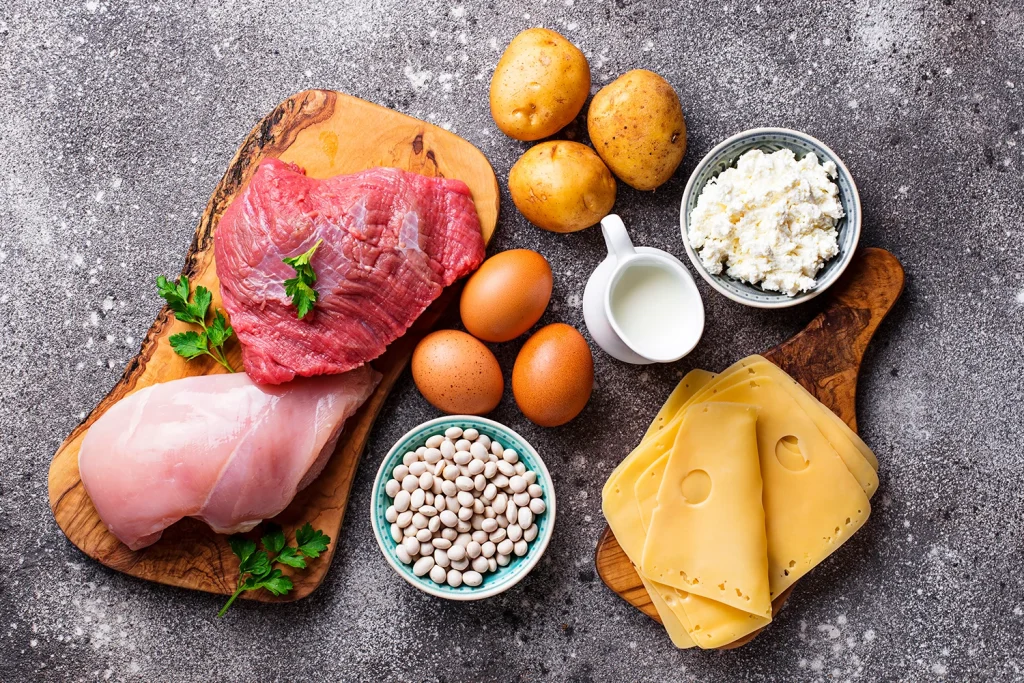
Amino acid
It is a nutritional ingredient that is the source of life and is a raw material for protein. Proteins make up important tissues in the body, such as muscles, skin, internal organs, and hair. Proteins make up every tissue in the body, and the building blocks are amino acids.
Epidermal growth factor EGF
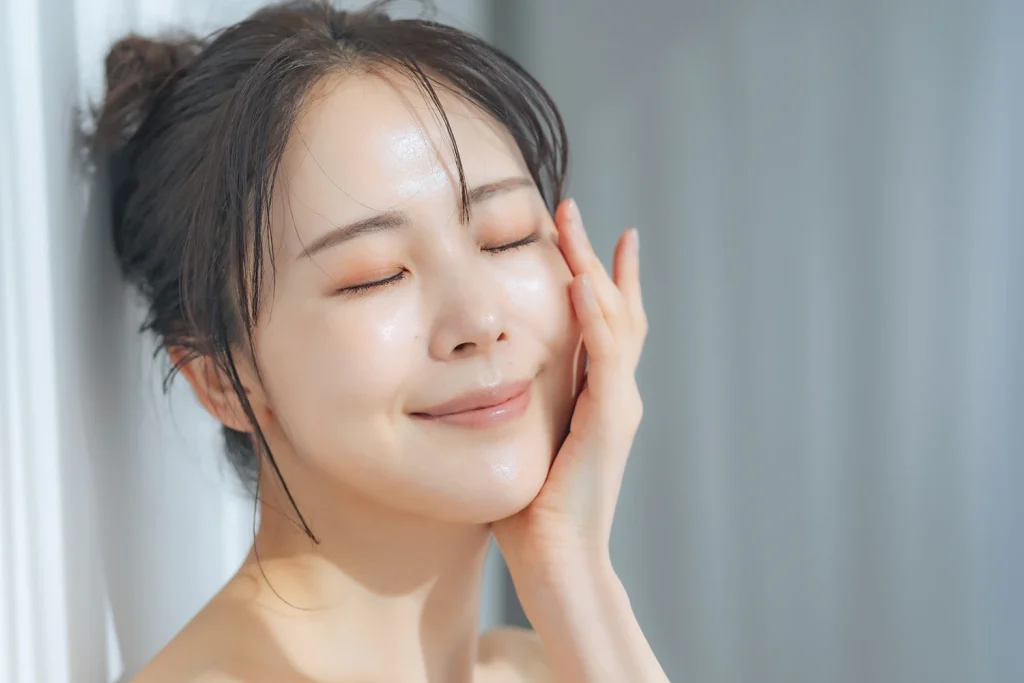
Epidermal growth factor EGF
A type of amino acid growth factor made from proteins that humans naturally have. Abbreviation for human epidermal growth factor. It works to promote epidermal turnover and improve skin texture.
fibroblast growth factor FGF
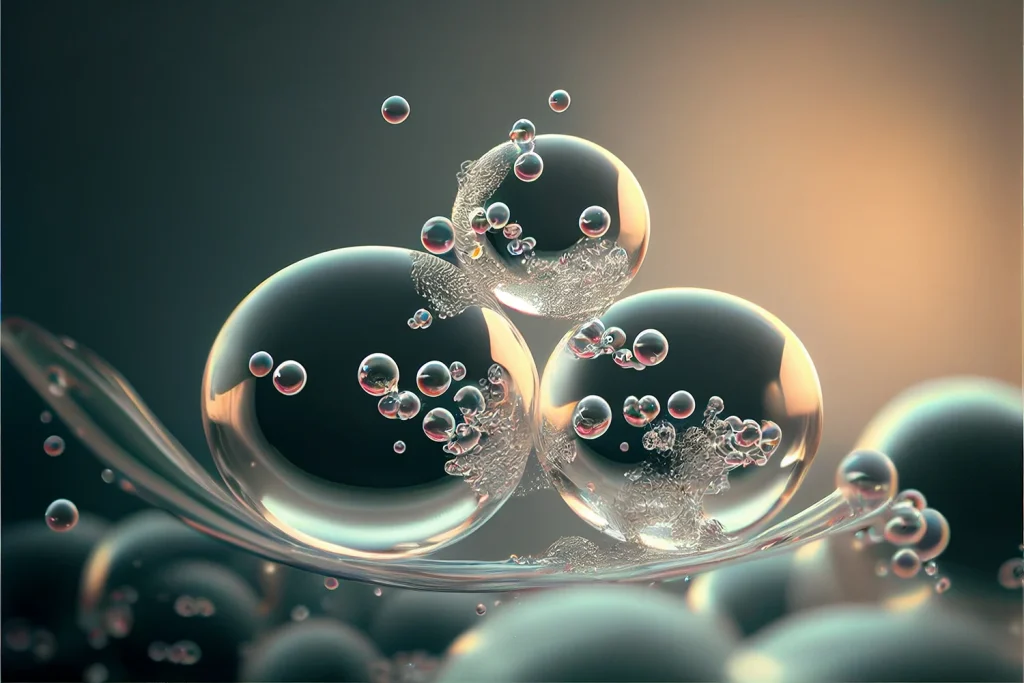
fibroblast growth factor FGF
Like EGF, it is a growth factor that exists in the human body. Abbreviation for basic fibroblast growth factor. It acts on collagen-producing cells called “fibroblasts” in the dermis, promoting growth and proliferation. Furthermore, hyaluronic acid is synthesized through the interaction of EGF and FGF.
Nucleic acid
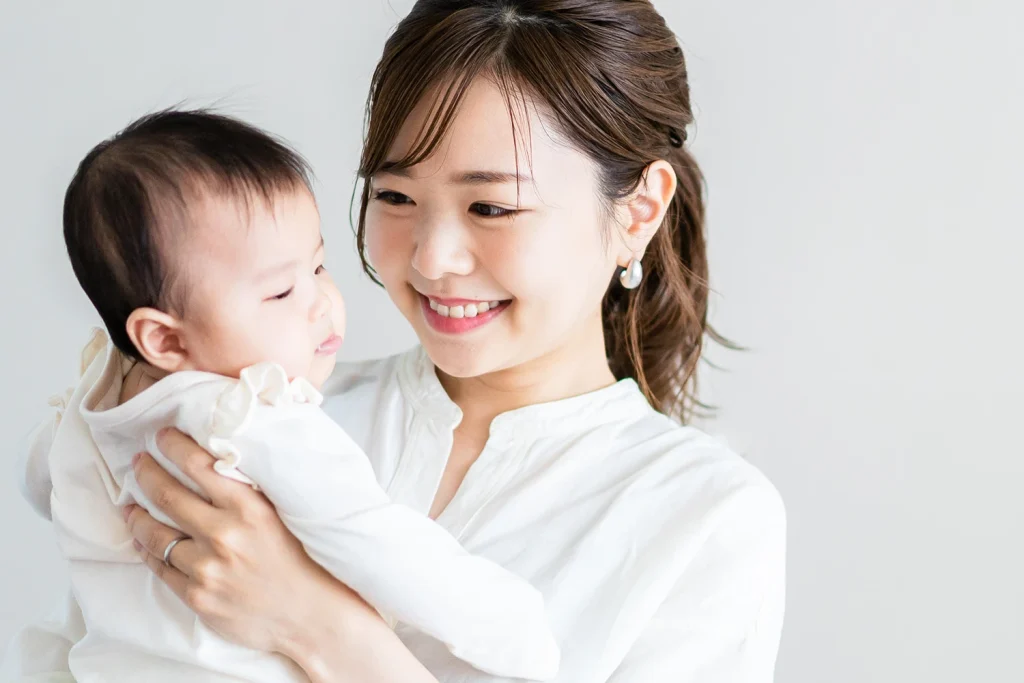
Nucleic acid
Nucleic acids are very important for keeping us young and disease-free. Even when genes are damaged for some reason and cannot regenerate proper cells, if nucleic acids are supplied, genes can be repaired and disease and aging can be prevented.
Carbohydrate

Carbohydrate
Carbohydrates are the most easily used as energy among the three major nutrients, and are fast-acting nutrients that can produce energy even without oxygen. By combining with oxygen, more energy can be produced.
Mucopolysaccharide
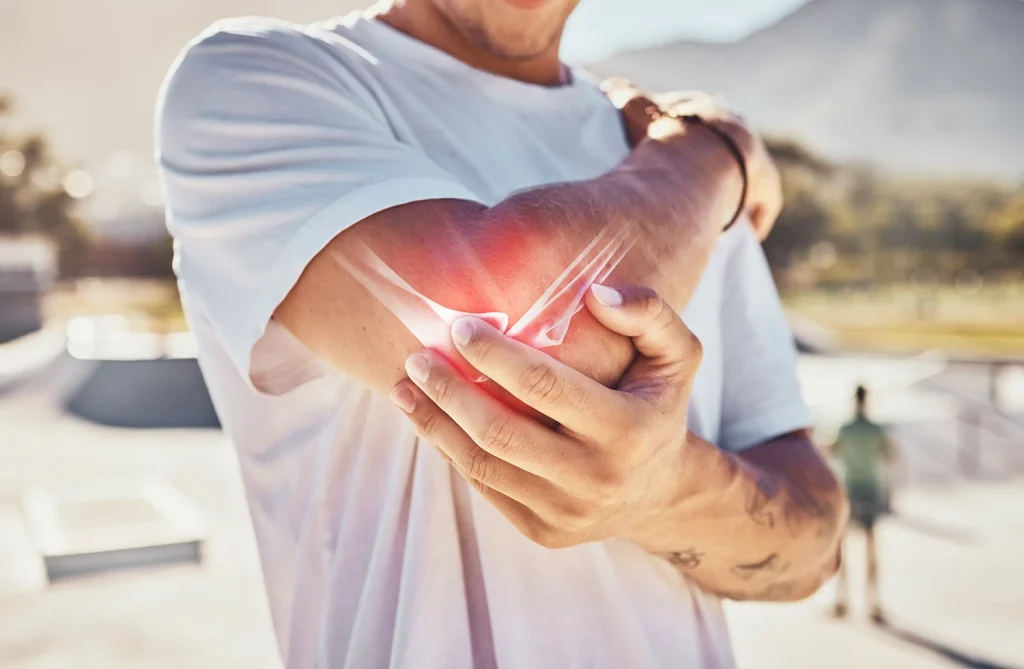
Mucopolysaccharide
A gel-like substance that connects cells. It has excellent water-retaining properties and plays a role in maintaining skin health and cushioning joints.
Vitamins, Minerals

Vitamins, Minerals
Balances physiological functions. It is an essential nutrient that is hardly biosynthesized in the body and must be ingested through diet.
Protein

Protein
It is a major nutritional component that is the source of blood and meat.
lipids/fatty acids

lipids/fatty acids
It is a nutrient that serves as an energy source and supports the building of our bodies such as cells and blood vessels.

